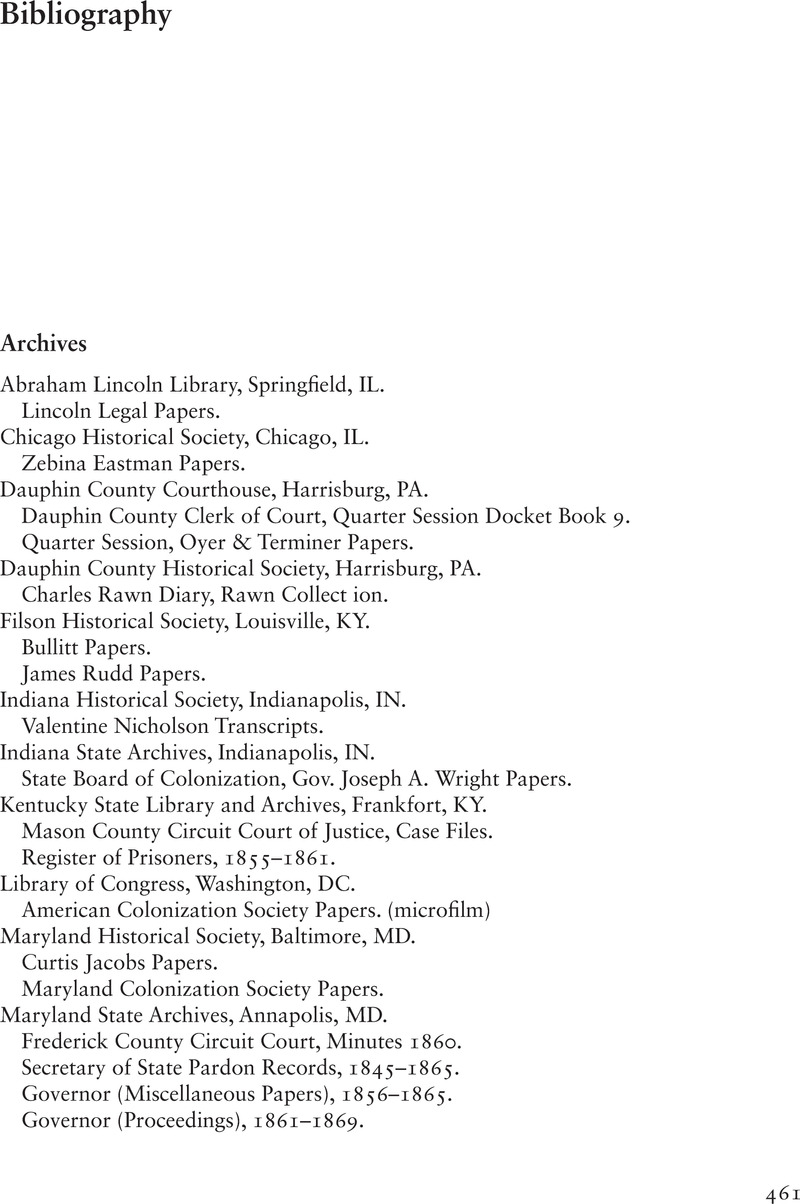 The Captive's Quest for Freedom
The Captive's Quest for Freedom Bibliography
Published online by Cambridge University Press: 19 January 2018
Summary

- Type
- Chapter
- Information
- The Captive's Quest for FreedomFugitive Slaves, the 1850 Fugitive Slave Law, and the Politics of Slavery, pp. 461 - 482Publisher: Cambridge University PressPrint publication year: 2018
